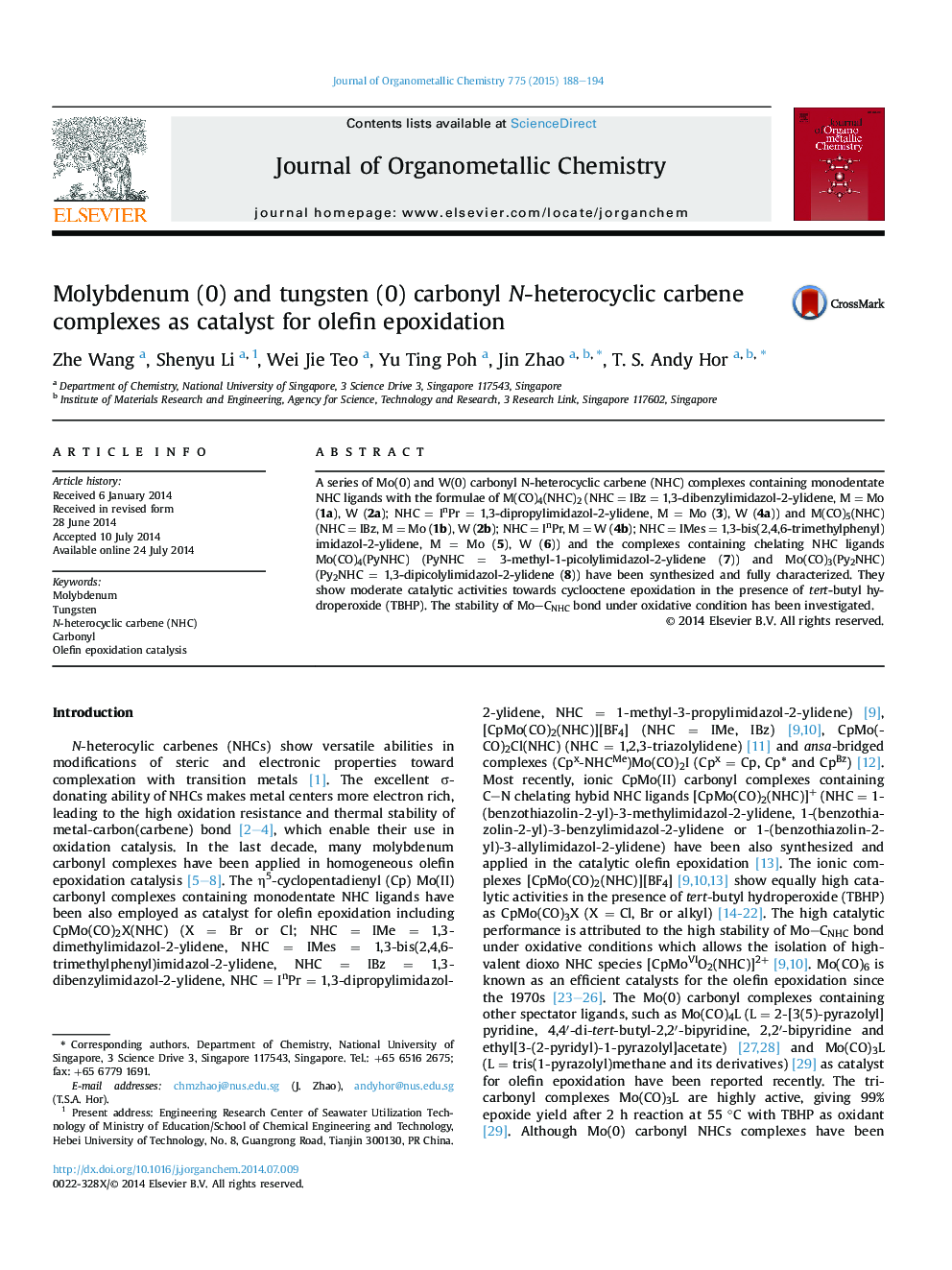| Article ID | Journal | Published Year | Pages | File Type |
|---|---|---|---|---|
| 1322211 | Journal of Organometallic Chemistry | 2015 | 7 Pages |
•Mo/W(0) carbony NHC complexes were synthesized and characterized.•Their catalytic activities towards cyclooctene epoxidation were reported.•The stability of Mo–CNHC bond under oxidative condition was investigated.
A series of Mo(0) and W(0) carbonyl N-heterocyclic carbene (NHC) complexes containing monodentate NHC ligands with the formulae of M(CO)4(NHC)2 (NHC = IBz = 1,3-dibenzylimidazol-2-ylidene, M = Mo (1a), W (2a); NHC = InPr = 1,3-dipropylimidazol-2-ylidene, M = Mo (3), W (4a)) and M(CO)5(NHC) (NHC = IBz, M = Mo (1b), W (2b); NHC = InPr, M = W (4b); NHC = IMes = 1,3-bis(2,4,6-trimethylphenyl)imidazol-2-ylidene, M = Mo (5), W (6)) and the complexes containing chelating NHC ligands Mo(CO)4(PyNHC) (PyNHC = 3-methyl-1-picolylimidazol-2-ylidene (7)) and Mo(CO)3(Py2NHC) (Py2NHC = 1,3-dipicolylimidazol-2-ylidene (8)) have been synthesized and fully characterized. They show moderate catalytic activities towards cyclooctene epoxidation in the presence of tert-butyl hydroperoxide (TBHP). The stability of Mo–CNHC bond under oxidative condition has been investigated.
Graphical abstractMo/W(0) carbonyl N-Heterocyclic Carbene (NHC) complexes containing monodentate NHC ligands or chelating NHC ligands have been synthesized and characterized. Their catalytic activities towards cyclooctene epoxidation in the presence of tert-butyl hydroperoxide and the stability of Mo–CNHC bond under oxidative condition have been investigated.Figure optionsDownload full-size imageDownload as PowerPoint slide
